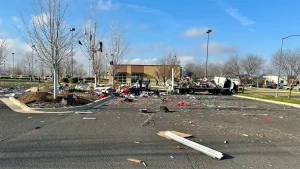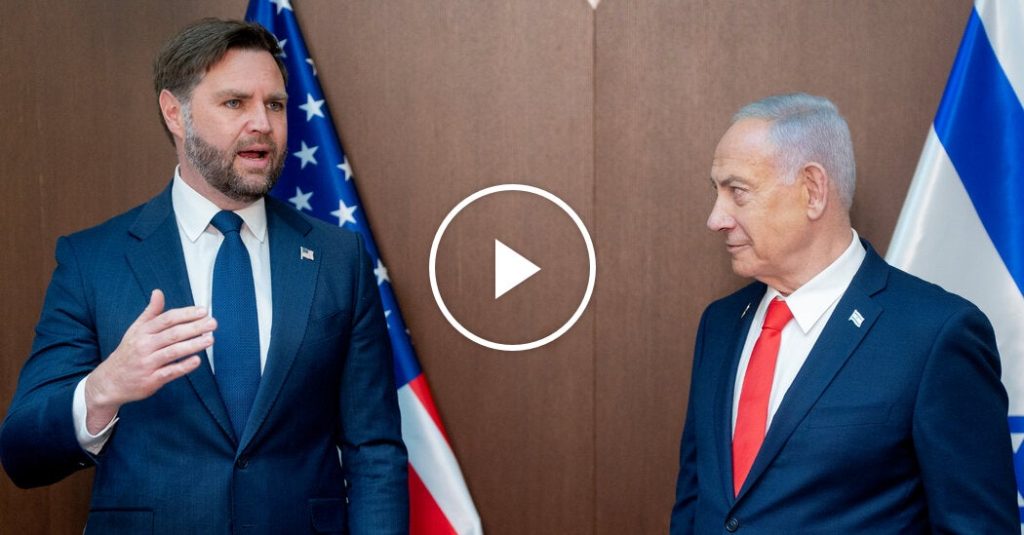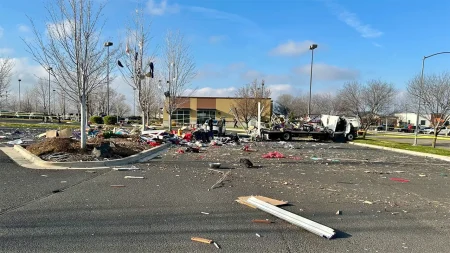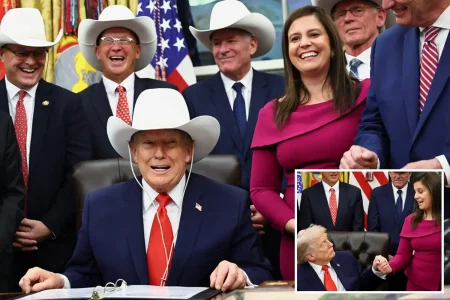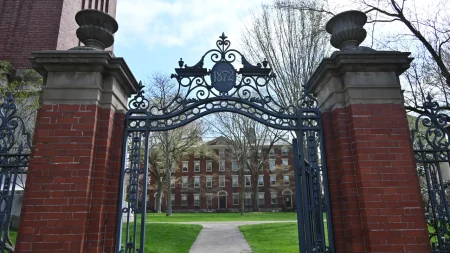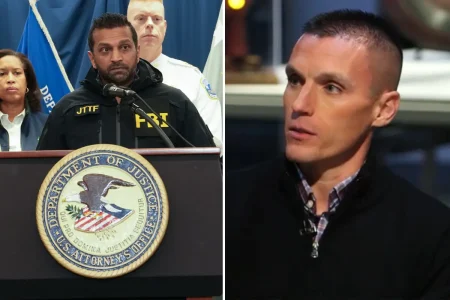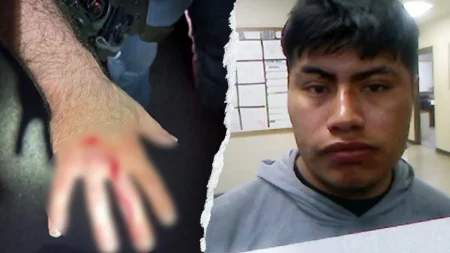Vice President Vance Expresses Optimism on Gaza Cease-Fire During Netanyahu Meeting
Diplomatic Engagement Continues Amid Fragile Peace in the Middle East
By Sarah Johnson | Middle East Correspondent
In a significant diplomatic exchange that could shape the future of Middle Eastern stability, Vice President JD Vance expressed cautious optimism about the sustainability of the Gaza cease-fire during his high-profile meeting with Israeli Prime Minister Benjamin Netanyahu in Jerusalem yesterday. The talks come at a critical juncture in the region’s peace process, with recent violent flare-ups underscoring the precarious nature of the current truce arrangement. “I think that we have an opportunity to do something really historic,” Vance stated during a press conference following the closed-door meeting, emphasizing the administration’s commitment to maintaining the fragile peace despite acknowledged challenges.
The Vice President’s visit represents the highest-level American diplomatic engagement in the region since the implementation of the cease-fire agreement, which has been subject to periodic violations in recent weeks. Standing alongside Netanyahu with American and Israeli flags as a backdrop, Vance carefully articulated the administration’s position, acknowledging the complexity of the situation while projecting confidence in the peace process. “It’s not easy. I never said it was easy,” Vance remarked, “but what I am is optimistic that the cease-fire is going to hold and that we can actually build a better future in the entire Middle East.” His comments reflect a delicate balancing act for the administration, which must simultaneously support its longtime ally Israel while working to prevent further humanitarian crises in Gaza and promoting broader regional stability.
The Diplomatic Context: Building on Months of Negotiation
The current cease-fire agreement follows months of intense diplomatic negotiations involving multiple international stakeholders, including the United States, Egypt, and Qatar. Security analysts note that Vance’s visit comes at a particularly sensitive moment, with implementation challenges threatening to undermine progress. Dr. Eliana Khoury, Director of Middle Eastern Studies at Georgetown University, told this publication that “the Vice President’s physical presence in Jerusalem sends a clear message about American investment in the peace process, but the real work happens behind the scenes with monitoring mechanisms and confidence-building measures.” The administration has deployed significant diplomatic resources to maintain communication channels between all parties, including those who aren’t directly engaging with each other.
Recent weeks have witnessed sporadic violations of the cease-fire terms, primarily along Gaza’s eastern border regions, raising concerns about the sustainability of the agreement without robust international monitoring. Vance addressed this reality directly, offering insight into the administration’s approach to maintaining the fragile peace. “It’s not about monitoring in the sense of, you know, you monitor a toddler,” he explained, distinguishing between superficial observation and meaningful engagement, “it’s about monitoring in the sense that there’s a lot of work, a lot of good people who are doing that work.” This acknowledgment of the intensive behind-the-scenes diplomatic efforts underscores the complexity of maintaining peace in one of the world’s most volatile regions. International peacekeeping officials have established monitoring stations at key flashpoints throughout Gaza, with technological surveillance complementing human intelligence gathering to provide early warning of potential violations.
Humanitarian Considerations and Regional Implications
Beyond the immediate security concerns, Vance’s discussions with Netanyahu reportedly focused heavily on humanitarian aid delivery mechanisms and reconstruction planning for Gaza. Sources familiar with the talks indicate that the Vice President emphasized the importance of sustaining humanitarian corridors and increasing the flow of essential supplies into the devastated territory. “The cease-fire creates political space, but delivering tangible improvements in living conditions for Palestinian civilians is critical to maintaining that space,” said Ambassador James Richards, former U.S. envoy to the Middle East Peace Process. International aid organizations have documented significant challenges in delivering humanitarian assistance despite the formal cease-fire, with bureaucratic obstacles and security concerns hampering distribution efforts.
The broader regional implications of the Gaza cease-fire featured prominently in the discussions, according to diplomatic sources. With multiple regional powers invested in the outcome, the stability of the agreement has ramifications far beyond the immediate Israel-Gaza context. Dr. Nadia Al-Saeed, Senior Fellow at the Middle East Institute, explained that “what happens in Gaza doesn’t stay in Gaza—the success or failure of this cease-fire will influence dynamics across the region, from Lebanon to Yemen.” Vance’s optimism must therefore be understood within this wider geopolitical framework, where the administration is attempting to leverage the Gaza agreement into a broader regional détente. Recent diplomatic initiatives involving Saudi Arabia and other Gulf states suggest a coordinated strategy to build upon the Gaza cease-fire to foster wider regional cooperation, potentially including normalization steps that seemed impossible during active conflict.
Challenges and Criticisms: The Road Ahead
Despite the Vice President’s optimistic stance, significant challenges remain in transitioning from cease-fire to sustainable peace. Domestic political pressures on both Israeli and Palestinian leadership complicate implementation efforts, with hardliners on both sides criticizing concessions. Within Israel, Netanyahu faces pressure from right-wing coalition partners who view the cease-fire as premature, while Palestinian factions remain divided on long-term political strategy. Congressional reactions to Vance’s trip have largely followed partisan lines, with supporters praising the administration’s engagement while critics question whether enough pressure is being applied to ensure compliance with humanitarian obligations.
Security analysts point to several critical indicators that will determine whether Vance’s optimism is justified in the coming weeks. “The administration’s monitoring mechanisms need to quickly identify and address violations before they escalate,” noted former Pentagon advisor Colonel Michael Reynolds. “Equally important is progress on prisoner exchanges and the establishment of credible reconstruction mechanisms that can deliver visible improvements on the ground.” The Vice President’s comments about “building a better future in the entire Middle East” speak to these longer-term aspirations, but significant diplomatic, financial, and security resources will be required to translate the current fragile truce into lasting stability. As Vance concluded his visit to Jerusalem, the message was clear: American diplomatic engagement remains central to the peace process, but ultimate success depends on the sustained commitment of all parties to honor agreements and pursue peaceful resolution of differences. The coming weeks will test whether the Vice President’s optimism was well-founded or merely hopeful diplomatic rhetoric in a region that has defied countless previous peace efforts.
About the Author: Sarah Johnson is the Chief Middle East Correspondent for this publication, with over fifteen years of experience covering regional conflicts, peace negotiations, and humanitarian issues across the Middle East and North Africa.
